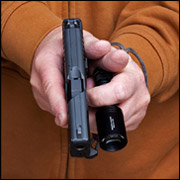It's 15k candela per their website: https://www.streamlight.com/en/produ...index/tlr-1-hl
I have both a x300U and the TLR-1 HL and honestly would have to nitpick to tell the difference. The X300U is more green and the TLR-1 HL is more cool white. The X300 as a more defined edge on the outer ring where the TLR does not. The TLR hot spot is slightly wider, but the intensity seems the same.




 Reply With Quote
Reply With Quote











 . Snarky and easily butt hurt. Favorite animal is the Cape Buffalo....likely indicative of a personality disorder.
. Snarky and easily butt hurt. Favorite animal is the Cape Buffalo....likely indicative of a personality disorder.